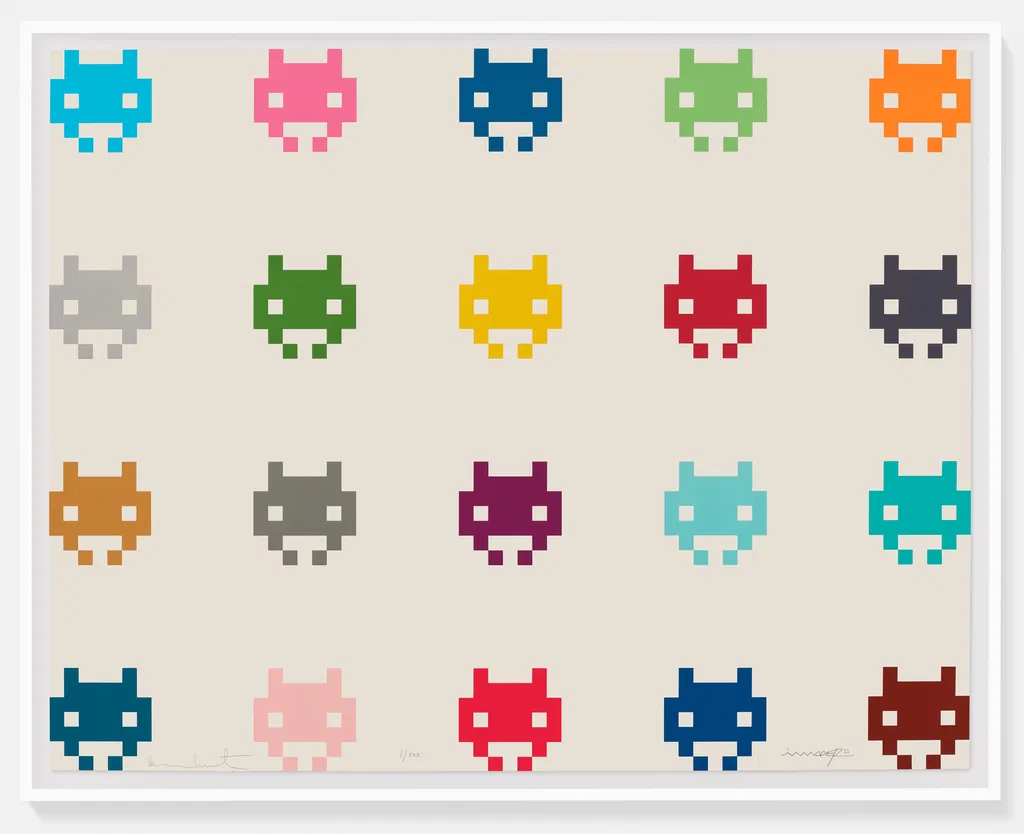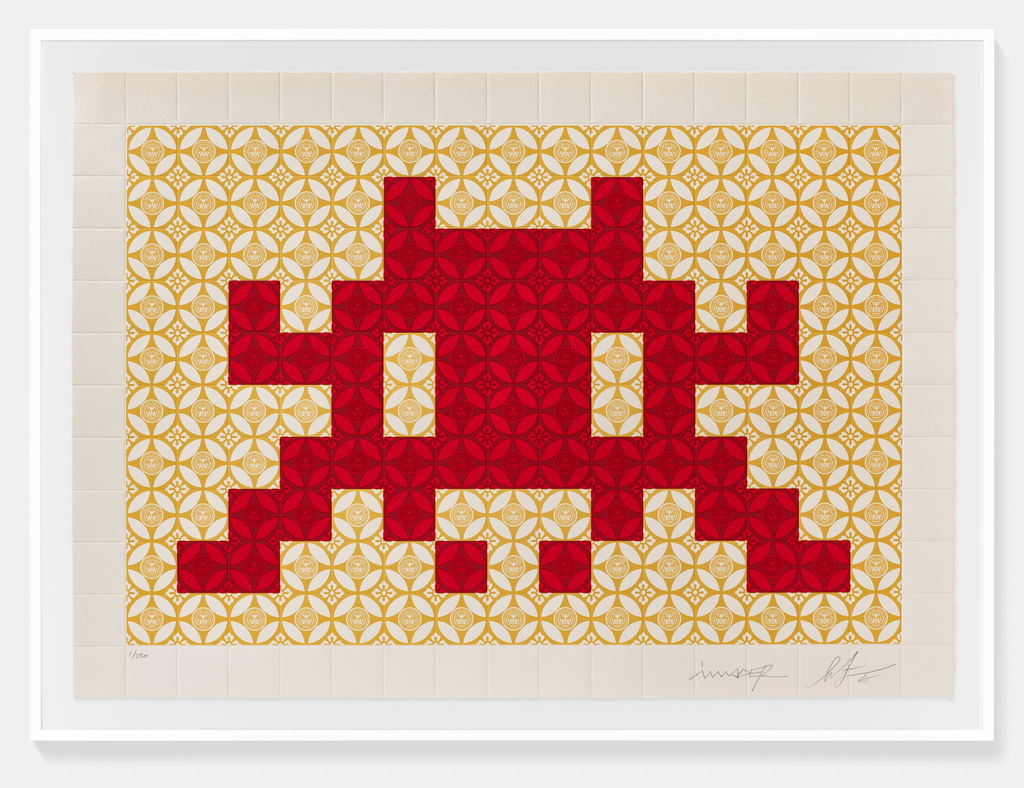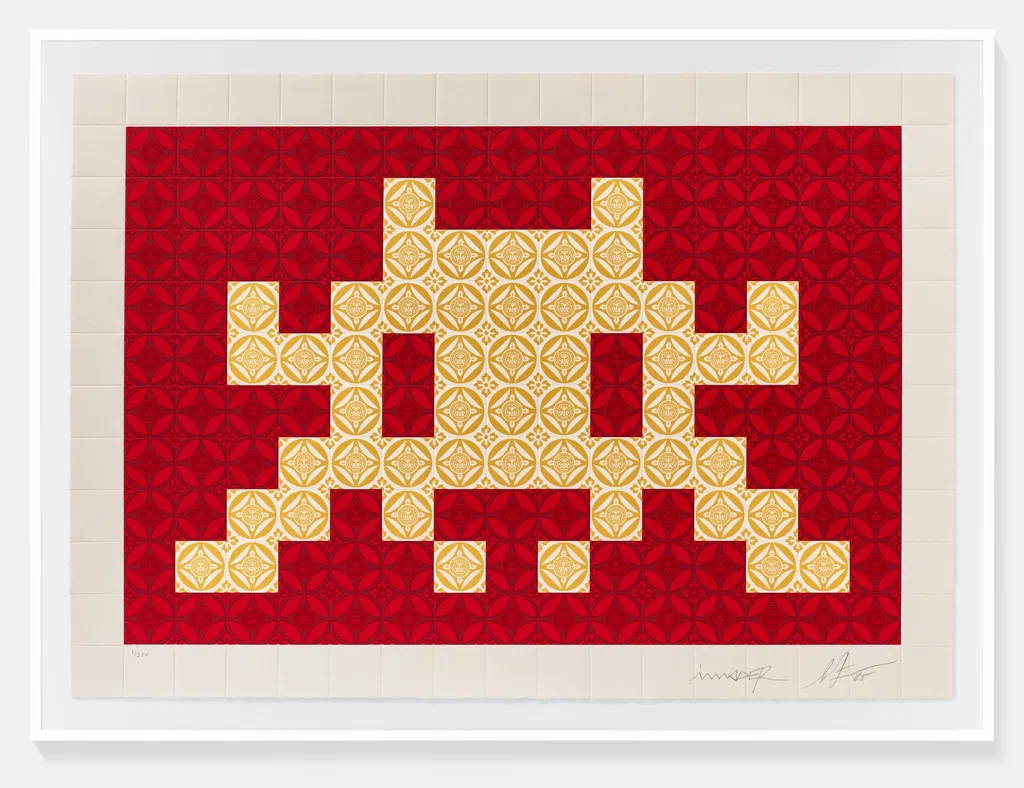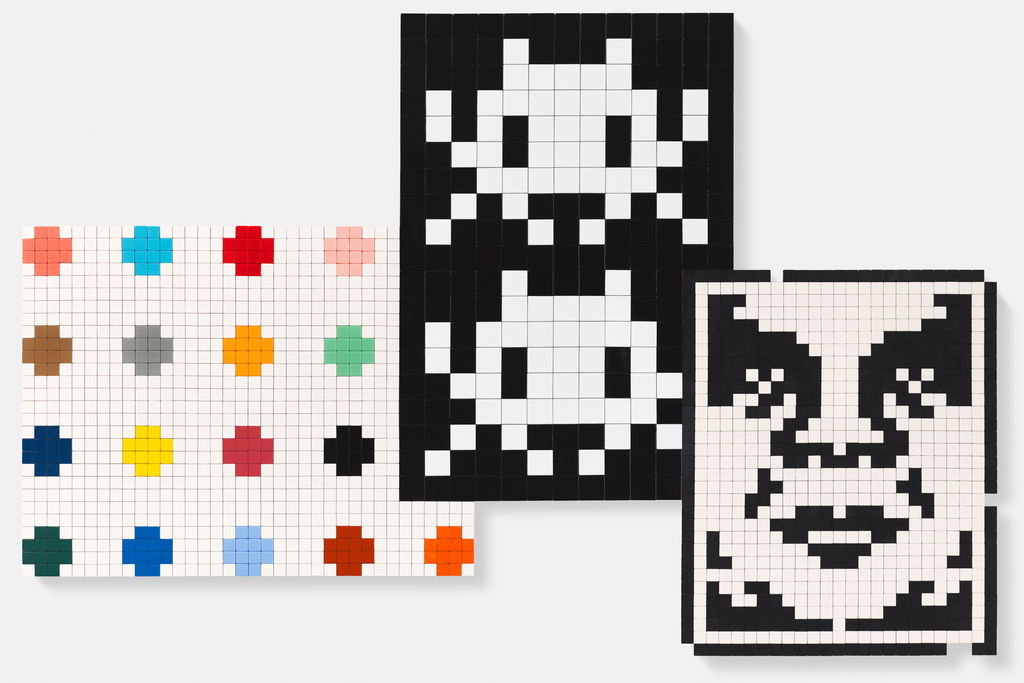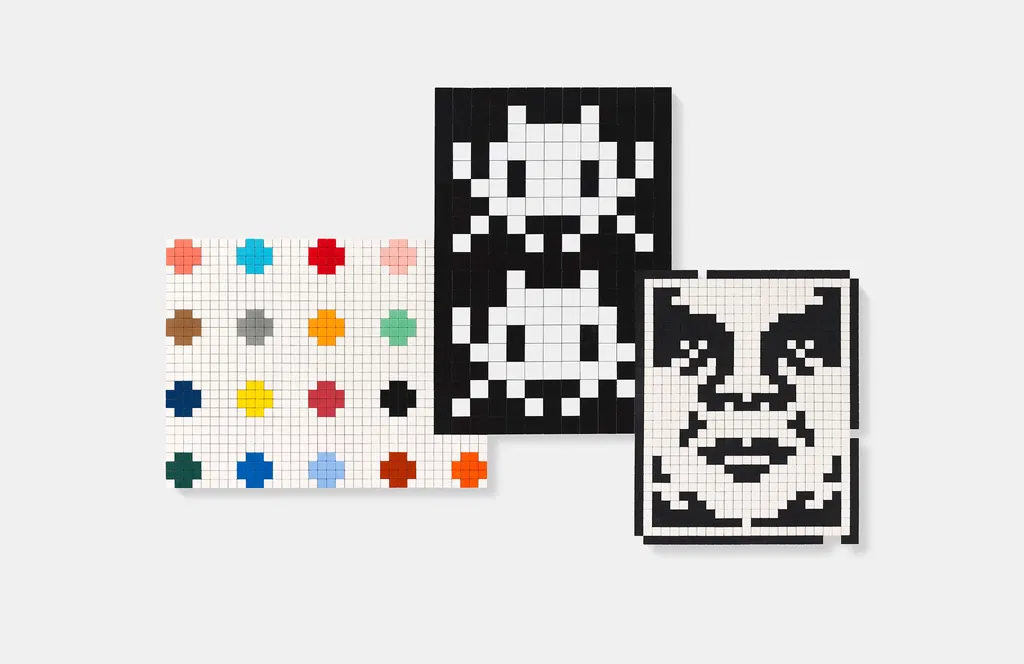Home
Artists
Invader
The elusive street artist Invader uses his now ubiquitous pixelated characters to unpretentiously bring art to the masses. Self-described as an Unidentified Free Artist (UFA) whose identity is perennially hidden behind masks and digital pixelations, his pseudonym reflects his artistic practice – to invade (often illegally) international spaces with viral art.

Interested in Invader?
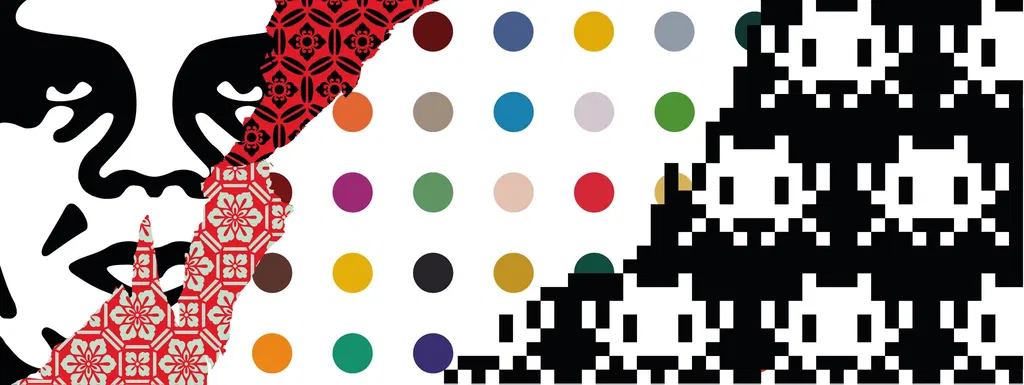
HENI Primary · 13 Oct 2025
Tripple Trouble by Fairey, Hirst and Invader
Discover Triple Trouble, original collaborative artworks by Shepard Fairey, Damien Hirst and Invader, available by application from 9 October 2025.

HENI Editions, HENI Primary · 29 Nov 2024
Camouflage & Alias and Pixel Pieces by Invader
HENI is delighted to present Camouflage editions and Alias and Pixel Pieces by Invader.

HENI Editions · 31 Jan 2023
Invader – Rubikcubism
Discover ‘Rubikcubism’ by Invader, four limited-edition prints from the French street artist's acclaimed series of Rubik Cube artworks.
About the Artist
The elusive street artist Invader uses his now ubiquitous pixelated characters to unpretentiously bring art to the masses. Self-described as an Unidentified Free Artist (UFA) whose identity is perennially hidden behind masks and digital pixelations, his pseudonym reflects his artistic practice – to invade (often illegally) international spaces with viral art.
Born in 1969 in France, Invader attended the prestigious École des Beaux-Arts in Paris. After graduating from art school, he struggled to become a professional artist and break into the gallery scene. As such, his art practice – which at the time consisted of painting and ‘experimental stuff’ – was subsidised by his work building websites for small businesses. This work in the early days of the Internet sparked Invader’s interest in pixelations, as did video games: ‘Space Invaders’ (1978) and its iconic 8-bit alien characters provided inspiration for Invader’s own characteristic alien motif.
Invader’s initial attempts to forge his own style and give a physical presence to digital characters began as paintings on canvas but quickly transitioned into mosaics using bathroom tiles, a medium that was instrumental for the development of his pixelated aesthetic. In 1998, Invader started disseminating his creatures across the public space with an alien mosaic, which he jokingly stuck onto a cement wall in Paris, claiming it was the best way for more people to see it. Since then, Invader has transposed his tiled mosaics across the world in his ‘Space Invader’ project, which aims to liberate not only art from alienating environments, but also the Space Invaders from the confines of video games and TV.
Focusing on densely populated urban areas across the globe, Invader brings between 20 to 50 pieces to each location, sometimes returning with more in a new ‘invasion wave’. His mosaics are meticulously placed, often out of reach and where they can attract the most attention. They are also thoughtfully composed, creating work that responds to or is in conversation with the relevant cultures and physical environments. This includes a Hello Kitty in Tokyo, a Spiderman in Paris which hangs upside down from the side of a chimney and the planets of the solar system on the wall of the European Space Agency in Frankfurt.
‘Space Invaders’ spans over 30 countries. It can be found also on the International Space Station (the first artwork to be exhibited in space) and on an installation on the seabed off the coast of Cancún. The discovery of a mosaic by Invader has become akin to a game of Where’s Waldo on an international scale. In fact, Invader has composed ‘Invasion Maps’ for some of the cities he has invaded and has even developed an app which allows its thousands of users to snap mosaics to accumulate points.
Never abandoning his dedication to street art, since 1998 Invader has expanded his practice into new media, delving into Rubik’s Cube sculptures in his acclaimed Rubkicubism series, producing installations and film, and even designing a sneaker which leaves an alien stamp on the ground. Invader has continued to innovate within his characteristic aesthetic, allowing it to evolve as he invents new ways to bring accessible art to the masses.

